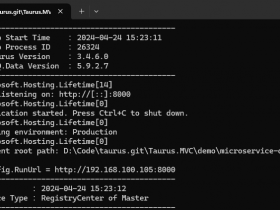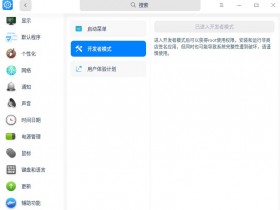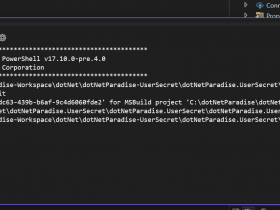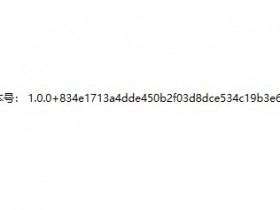- A+
今天,我们深度研究一下IHttpClientFactory。
一、前言
最早,我们是在Dotnet Framework中接触到HttpClient。
HttpClient给我们提供了与HTTP交互的基本方式。但这个HttpClient在大量频繁使用时,也会给我们抛出两个大坑:一方面,如果我们频繁创建和释放HttpClient实例,会导致Socket套接字资源耗尽,原因是因为Socket关闭后的TIME_WAIT时间。这个问题不展开说,如果需要可以去查TCP的生命周期。而另一方面,如果我们创建一个HttpClient单例,那当被访问的HTTP的DNS记录发生改变时,会抛出异常,因为HttpClient并不会允许这种改变。
现在,对于这个内容,有了更优的解决方案。
从Dotnet Core 2.1开始,框架提供了一个新的内容:IHttpClientFactory。
IHttpClientFactory用来创建HTTP交互的HttpClient实例。它通过将HttpClient的管理和用于发送内容的HttpMessageHandler链分离出来,来解决上面提到的两个问题。这里面,重要的是管理管道终端HttpClientHandler的生命周期,而这个就是实际连接的处理程序。
除此之外,IHttpClientFactory还可以使用IHttpClientBuilder方便地来定制HttpClient和内容处理管道,通过前置配置创建出的HttpClient,实现诸如设置基地址或添加HTTP头等操作。
为防止非授权转发,这儿给出本文的原文链接:https://www.cnblogs.com/tiger-wang/p/13752297.html
先来看一个简单的例子:
public void ConfigureServices(IServiceCollection services)
{
services.AddHttpClient("WangPlus", c =>
{
c.BaseAddress = new Uri("https://github.com/humornif");
})
.ConfigureHttpClient(c =>
{
c.DefaultRequestHeaders.Add("Accept", "application/vnd.github.v3+json");
c.DefaultRequestHeaders.Add("User-Agent", "HttpClientFactory-Sample");
});
}
在这个例子中,当调用ConfigureHttpClient()或AddHttpMessageHandler()来配置HttpClient时,实际上是在向IOptions的实例HttpClientFactoryOptions添加配置。这个方法提供了非常多的配置选项,具体可以去看微软的文档,这儿不多说。
在类中使用IHttpClientFactory时,也是同样的方式:创建一个IHttpClientFactory的单例实例,然后调用CreateClient(name)创建一个具有名称WangPlus的HttpClient。
看下面的例子:
public class MyService
{
private readonly IHttpClientFactory _factory;
public MyService(IHttpClientFactory factory)
{
_factory = factory;
}
public async Task DoSomething()
{
HttpClient client = _factory.CreateClient("WangPlus");
}
}
用法很简单。
下面,我们会针对CreateClient()进行剖析,来深入理解IHttpClientFactory背后的内容。
二、HttpClient & HttpMessageHandler的创建过程
CreateClient()方法是与IHttpClientFactory交互的主要方法。
看一下CreateClient()的代码实现:
private readonly IOptionsMonitor<HttpClientFactoryOptions> _optionsMonitor
public HttpClient CreateClient(string name)
{
HttpMessageHandler handler = CreateHandler(name);
var client = new HttpClient(handler, disposeHandler: false);
HttpClientFactoryOptions options = _optionsMonitor.Get(name);
for (int i = 0; i < options.HttpClientActions.Count; i++)
{
options.HttpClientActions[i](client);
}
return client;
}
代码看上去很简单。首先通过CreateHandler()创建了一个HttpMessageHandler的处理管道,并传入要创建的HttpClient的名称。
有了这个处理管道,就可以创建HttpClient并传递给处理管道。这儿需要注意的是disposeHandler:false,这个参数用来保证当我们释放HttpClient的时候,处理管理不会被释放掉,因为IHttpClientFactory会自己完成这个管道的处理。
然后,从IOptionsMonitor的实例中获取已命名的客户机的HttpClientFactoryOptions。它来自Startup.ConfigureServices()中添加的HttpClient配置函数,并设置了BaseAddress和Header等内容。
最后,将HttpClient返回给调用者。
理解了这个内容,下面我们来看看CreateHandler(name)方法,研究一下HttpMessageHandler管道是如何创建的。
readonly ConcurrentDictionary<string, Lazy<ActiveHandlerTrackingEntry>> _activeHandlers;;
readonly Func<string, Lazy<ActiveHandlerTrackingEntry>> _entryFactory = (name) =>
{
return new Lazy<ActiveHandlerTrackingEntry>(() =>
{
return CreateHandlerEntry(name);
}, LazyThreadSafetyMode.ExecutionAndPublication);
};
public HttpMessageHandler CreateHandler(string name)
{
ActiveHandlerTrackingEntry entry = _activeHandlers.GetOrAdd(name, _entryFactory).Value;
entry.StartExpiryTimer(_expiryCallback);
return entry.Handler;
}
看这段代码:CreateHandler()做了两件事:
- 创建或获取
ActiveHandlerTrackingEntry; - 开始一个计时器。
_activeHandlers是一个ConcurrentDictionary<>,里面保存的是HttpClient的名称(例如上面代码中的WangPlus)。这里使用Lazy<>是一个使GetOrAdd()方法保持线程安全的技巧。实际创建处理管道的工作在CreateHandlerEntry中,它创建了一个ActiveHandlerTrackingEntry。
ActiveHandlerTrackingEntry是一个不可变的对象,包含HttpMessageHandler和IServiceScope注入。此外,它还包含一个与StartExpiryTimer()一起使用的内部计时器,用于在计时器过期时调用回调函数。
看一下ActiveHandlerTrackingEntry的定义:
internal class ActiveHandlerTrackingEntry
{
public LifetimeTrackingHttpMessageHandler Handler { get; private set; }
public TimeSpan Lifetime { get; }
public string Name { get; }
public IServiceScope Scope { get; }
public void StartExpiryTimer(TimerCallback callback)
{
// Starts the internal timer
// Executes the callback after Lifetime has expired.
// If the timer has already started, is noop
}
}
因此CreateHandler方法要么创建一个新的ActiveHandlerTrackingEntry,要么从字典中检索条目,然后启动计时器。
下一节,我们来看看CreateHandlerEntry()方法如何创建ActiveHandlerTrackingEntry实例。
三、在CreateHandlerEntry中创建和跟踪HttpMessageHandler
CreateHandlerEntry方法是创建HttpClient处理管道的地方。
这个部分代码有点复杂,我们简化一下,以研究过程为主:
private readonly IServiceProvider _services;
private readonly IHttpMessageHandlerBuilderFilter[] _filters;
private ActiveHandlerTrackingEntry CreateHandlerEntry(string name)
{
IServiceScope scope = _services.CreateScope();
IServiceProvider services = scope.ServiceProvider;
HttpClientFactoryOptions options = _optionsMonitor.Get(name);
HttpMessageHandlerBuilder builder = services.GetRequiredService<HttpMessageHandlerBuilder>();
builder.Name = name;
Action<HttpMessageHandlerBuilder> configure = Configure;
for (int i = _filters.Length - 1; i >= 0; i--)
{
configure = _filters[i].Configure(configure);
}
configure(builder);
var handler = new LifetimeTrackingHttpMessageHandler(builder.Build());
return new ActiveHandlerTrackingEntry(name, handler, scope, options.HandlerLifetime);
void Configure(HttpMessageHandlerBuilder b)
{
for (int i = 0; i < options.HttpMessageHandlerBuilderActions.Count; i++)
{
options.HttpMessageHandlerBuilderActions[i](b);
}
}
}
先用根DI容器创建一个IServiceScope,从关联的IServiceProvider中获取关联的服务,再从HttpClientFactoryOptions中找到对应名称的HttpClient和它的配置。
从容器中查找的下一项是HttpMessageHandlerBuilder,默认值是DefaultHttpMessageHandlerBuilder,这个值通过创建一个主处理程序(负责建立Socket套接字和发送请求的HttpClientHandler)来构建处理管道。我们可以通过添加附加的委托来包装这个主处理程序,来为请求和响应创建自定义管理。
附加的委托DelegatingHandlers类似于Core的中间件管道:
Configure()根据Startup.ConfigureServices()提供的配置构建DelegatingHandlers管道;IHttpMessageHandlerBuilderFilter是注入到IHttpClientFactory构造函数中的过滤器,用于在委托处理管道中添加额外的处理程序。
IHttpMessageHandlerBuilderFilter类似于IStartupFilters,默认注册的是LoggingHttpMessageHandlerBuilderFilter。这个过滤器向委托管道添加了两个额外的处理程序:
- 管道开始位置的
LoggingScopeHttpMessageHandler,会启动一个新的日志Scope; - 管道末端的
LoggingHttpMessageHandler,在请求被发送到主HttpClientHandler之前,记录有关请求和响应的日志;
最后,整个管道被包装在一个LifetimeTrackingHttpMessageHandler中。管道处理完成后,将与用于创建它的IServiceScope一起保存在一个新的ActiveHandlerTrackingEntry实例中,并给定HttpClientFactoryOptions中定义的生存期(默认为两分钟)。
该条目返回给调用者(CreateHandler()方法),添加到处理程序的ConcurrentDictionary<>中,添加到新的HttpClient实例中(在CreateClient()方法中),并返回给原始调用者。
在接下来的生存期(两分钟)内,每当您调用CreateClient()时,您将获得一个新的HttpClient实例,但是它具有与最初创建时相同的处理程序管道。
每个命名或类型化的HttpClient都有自己的消息处理程序管道。例如,名称为WangPlus的两个HttpClient实例将拥有相同的处理程序链,但名为api的HttpClient将拥有不同的处理程序链。
下一节,我们研究下计时器过期后的清理处理。
三、过期清理
以默认时间来说,两分钟后,存储在ActiveHandlerTrackingEntry中的计时器将过期,并触发StartExpiryTimer()的回调方法ExpiryTimer_Tick()。
ExpiryTimer_Tick负责从ConcurrentDictionary<>池中删除处理程序记录,并将其添加到过期处理程序队列中:
readonly ConcurrentQueue<ExpiredHandlerTrackingEntry> _expiredHandlers;
internal void ExpiryTimer_Tick(object state)
{
var active = (ActiveHandlerTrackingEntry)state;
_activeHandlers.TryRemove(active.Name, out Lazy<ActiveHandlerTrackingEntry> found);
var expired = new ExpiredHandlerTrackingEntry(active);
_expiredHandlers.Enqueue(expired);
StartCleanupTimer();
}
当一个处理程序从_activeHandlers集合中删除后,当调用CreateClient()时,它将不再与新的HttpClient一起分发,但会保持在内存存,直到引用此处理程序的所有HttpClient实例全部被清除后,IHttpClientFactory才会最终释放这个处理程序管道。
IHttpClientFactory使用LifetimeTrackingHttpMessageHandler和ExpiredHandlerTrackingEntry来跟踪处理程序是否不再被引用。
看下面的代码:
internal class ExpiredHandlerTrackingEntry
{
private readonly WeakReference _livenessTracker;
public ExpiredHandlerTrackingEntry(ActiveHandlerTrackingEntry other)
{
Name = other.Name;
Scope = other.Scope;
_livenessTracker = new WeakReference(other.Handler);
InnerHandler = other.Handler.InnerHandler;
}
public bool CanDispose => !_livenessTracker.IsAlive;
public HttpMessageHandler InnerHandler { get; }
public string Name { get; }
public IServiceScope Scope { get; }
}
根据这段代码,ExpiredHandlerTrackingEntry创建了对LifetimeTrackingHttpMessageHandler的弱引用。根据上一节所写的,LifetimeTrackingHttpMessageHandler是管道中的“最外层”处理程序,因此它是HttpClient直接引用的处理程序。
对LifetimeTrackingHttpMessageHandler使用WeakReference意味着对管道中最外层处理程序的直接引用只有在HttpClient中。一旦垃圾收集器收集了所有这些HttpClient,LifetimeTrackingHttpMessageHandler将没有引用,因此也将被释放。ExpiredHandlerTrackingEntry可以通过WeakReference.IsAlive检测到。
在将一个记录添加到_expiredHandlers队列之后,StartCleanupTimer()将启动一个计时器,该计时器将在10秒后触发。触发后调用CleanupTimer_Tick()方法,检查是否对处理程序的所有引用都已过期。如果是,处理程序和IServiceScope将被释放。如果没有,它们被添加回队列,清理计时器再次启动:
internal void CleanupTimer_Tick()
{
StopCleanupTimer();
int initialCount = _expiredHandlers.Count;
for (int i = 0; i < initialCount; i++)
{
_expiredHandlers.TryDequeue(out ExpiredHandlerTrackingEntry entry);
if (entry.CanDispose)
{
try
{
entry.InnerHandler.Dispose();
entry.Scope?.Dispose();
}
catch (Exception ex)
{
}
}
else
{
_expiredHandlers.Enqueue(entry);
}
}
if (_expiredHandlers.Count > 0)
{
StartCleanupTimer();
}
}
为了看清代码的流程,这个代码我简单了。原始的代码中还有日志记录和线程锁相关的内容。
这个方法比较简单:遍历ExpiredHandlerTrackingEntry记录,并检查是否删除了对LifetimeTrackingHttpMessageHandler处理程序的所有引用。如果有,处理程序和IServiceScope就会被释放。
如果仍然有对任何LifetimeTrackingHttpMessageHandler处理程序的活动引用,则将条目放回队列,并再次启动清理计时器。
四、总结
如果你看到了这儿,那说明你还是很有耐心的。
这篇文章是一个对源代码的研究,能够帮我们理解IHttpClientFactory的运行方式,以及它是以什么样的方式填补了旧的HttpClient的坑。
有些时候,看看源代码,还是很有益处的。
 |
微信公众号:老王Plus 扫描二维码,关注个人公众号,可以第一时间得到最新的个人文章和内容推送 本文版权归作者所有,转载请保留此声明和原文链接 |




